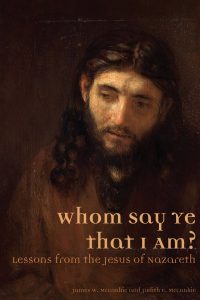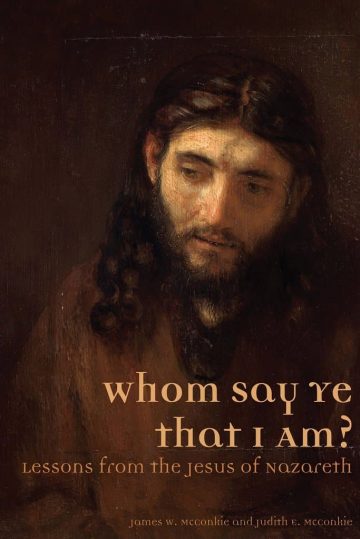
By James McConkie and Judith McConkie
Published by Greg Kofford Books
There are a lot of books out there about Jesus. Why might you be interested in this one? I’ll tell you briefly.
This book puts Jesus’ teachings in context of the Jewish and Roman religion, politics, and culture of his time. That’s certainly been done before. But what I think is particularly valuable about this book for an LDS audience is its sources. Unlike a lot of LDS literature that takes its Latter-day scripture and church authorities as primary sources, this book quotes very few LDS sources. Instead, it’s a kind of meta-analysis of contemporary scholarship on Jesus, using almost a dozen different Bible translations, the apocrypha, and many well-respected writers and scholars, some I’d read or heard from (John Dominic Crosson, James Martin, Harold Kushner, Eugene Peterson), and many I had not. The authors draw on scholarship that is often underutilized in LDS writing to bring a fresh perspective on many aspects of Jesus’ life and teaching.
The book is organized in three sections: I, Jesus and Individuals, II, Jesus and Institutions, III, Concluding Thoughts. Section I includes chapters on women, marriage, the poor, the wealthy, the sick, the lost, the outcast, the enemy. It presents these topics in ways that will probably kindle some discomfort in many readers, for example the existence of female apostles and Jesus’ expansive idea of family, which doesn’t sit easily beside the contemporary LDS preoccupation with the nuclear family. However the book stops short of explicit critique of anything, and gives no suggestions for change. There is very little interpretation or exegesis by the authors, which is either a strength or a weakness, depending on what you hope to get out of the book.
There are a great many interesting facts presented that add depth and meaning to the stories of Jesus. For instance the woman with the lost coin in Luke 15 may have been looking for a special coin, a drachma, which was given to a Jewish girl and worn as an ornament after her marriage, giving the coin as much or more sentimental value as economic value. I especially appreciated the explanation of shepherds in Jesus’ time. They were unclean because “as a practical matter they could not observe long hours of prayer or follow the rituals of hand washings before eating or the purity law for handling blood of injured animals. They were by definition unclean. Their lives spent in fields tending sheep made such religious demands impossible.” To me, this awareness adds another layer of meaning to the fact that Jesus called himself the Good Shepherd (John 10:11). The explanations of the extreme differences in power and privilege between the upper and lower strata of Roman and Jewish society were also striking.
I found myself less interested in the section on Institutions than the section on Individuals, which surprised me because I’m very interested in critiques of institutions in my own life. And the final two chapters, a discussion of discipleship using salt as a metaphor for full commitment, and a speculative essay by a relative of the McConkies titled “In Search of the Personality of Jesus” felt like an unsatisfying end to me. I wanted more synthesis and analysis of the book as a whole for a conclusion. However, I learned a lot from reading this book. I feel I know Jesus better after having read it, and if I’m still teaching Gospel Doctrine in my ward when we study the New Testament next year, I will definitely use it as a resource.



